152 scholarly books by Royal Botanic Gardens, Kew and 14
have author last names that start with D
152 scholarly books by Royal Botanic Gardens, Kew and 14
152 scholarly books by Royal Botanic Gardens, Kew
14 have author last names that start with D have author last names that start with D
14 have author last names that start with D have author last names that start with D
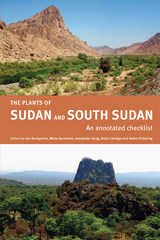
The Plants of Sudan and South Sudan
An Annotated Checklist
Iain Darbyshire
Royal Botanic Gardens, Kew, 2014
From gummy bears to watercolors to fireworks, many everyday products contain traces of Sudanese plants. With more than four thousand diverse species of flora in the Republic of Sudan and the recently seceded Republic of South Sudan, they cover a vast area of tropical northeast Africa, from the hyper-arid desert in the north to the rainforest and extensive wetlands in the south.
The Plants of Sudan and South Sudan is the first comprehensive look at the plants of this region and includes nearly every known species. Each entry includes accepted scientific names, relevant synonymy, and brief habitat notes, as well as both global and regional distribution data. Also featured is a list of globally threatened plant species, their habitats, and their distribution within the region, which offers conservationists, land management agencies, and governmental departments key information on potential conservation priorities. This book will be the baseline reference for all future botanical and conservation work in the Sudan region.
The Plants of Sudan and South Sudan is the first comprehensive look at the plants of this region and includes nearly every known species. Each entry includes accepted scientific names, relevant synonymy, and brief habitat notes, as well as both global and regional distribution data. Also featured is a list of globally threatened plant species, their habitats, and their distribution within the region, which offers conservationists, land management agencies, and governmental departments key information on potential conservation priorities. This book will be the baseline reference for all future botanical and conservation work in the Sudan region.
[more]

As Áreas Importantes de Plantas de Moçambique
Iain Darbyshire
Royal Botanic Gardens, Kew, 2024
The Portuguese-language edition of an assessment of fifty critical sites for plant conservation.
The Important Plant Areas of Mozambique is based on the Mozambique TIPAs project run in collaboration between Royal Botanic Gardens, Kew, Mozambique’s Agricultural Research Institute (Instituto de Investigação Agrária de Moçambique – IIAM), and the University Eduardo Mondlane. Drawing on information from the TIPAs database, The Important Plant Areas of Mozambique includes color maps and photographs, site descriptions, and tables to present information on the botanical significance, habitat, and geology of the region. The book will also address conservation issues and ecosystem services to promote Mozambique’s critical plant sites and inform conservation leaders in government, NGOs, universities, and local communities about Mozambique’s threatened habitats.
The Important Plant Areas of Mozambique is based on the Mozambique TIPAs project run in collaboration between Royal Botanic Gardens, Kew, Mozambique’s Agricultural Research Institute (Instituto de Investigação Agrária de Moçambique – IIAM), and the University Eduardo Mondlane. Drawing on information from the TIPAs database, The Important Plant Areas of Mozambique includes color maps and photographs, site descriptions, and tables to present information on the botanical significance, habitat, and geology of the region. The book will also address conservation issues and ecosystem services to promote Mozambique’s critical plant sites and inform conservation leaders in government, NGOs, universities, and local communities about Mozambique’s threatened habitats.
[more]
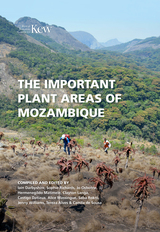
The Important Plant Areas of Mozambique
Iain Darbyshire
Royal Botanic Gardens, Kew, 2023
An assessment of fifty critical sites for plant conservation.
The Important Plant Areas of Mozambique is based on the Mozambique TIPAs project run in collaboration between Royal Botanic Gardens, Kew, Mozambique’s Agricultural Research Institute (Instituto de Investigação Agrária de Moçambique – IIAM), and the University Eduardo Mondlane. Drawing on information from the TIPAs database, The Important Plant Areas of Mozambique includes color maps and photographs, site descriptions, and tables to present information on the botanical significance, habitat, and geology of the region. The book will also address conservation issues and ecosystem services to promote Mozambique’s critical plant sites and inform conservation leaders in government, NGOs, universities, and local communities about Mozambique’s threatened habitats.
The Important Plant Areas of Mozambique is based on the Mozambique TIPAs project run in collaboration between Royal Botanic Gardens, Kew, Mozambique’s Agricultural Research Institute (Instituto de Investigação Agrária de Moçambique – IIAM), and the University Eduardo Mondlane. Drawing on information from the TIPAs database, The Important Plant Areas of Mozambique includes color maps and photographs, site descriptions, and tables to present information on the botanical significance, habitat, and geology of the region. The book will also address conservation issues and ecosystem services to promote Mozambique’s critical plant sites and inform conservation leaders in government, NGOs, universities, and local communities about Mozambique’s threatened habitats.
[more]

The Herbarium Handbook
Nina M. J. Davies
Royal Botanic Gardens, Kew, 2023
A new edition of an essential resource for all botanists, herbarium managers, and technicians involved with the making and maintenance of herbarium collections.
The Herbarium Handbook has been an important reference for herbarium collections care and management since it was first published in 1989. Based on standard herbarium practices and personal experience from experts at the Royal Botanic Gardens, Kew, the book also draws on examples from partners and collaborators around the world, making it accessible and adaptable for all herbarium practitioners. The book covers everything from creating herbarium collections to preparing and caring for specimens, managing a herbarium building, and public engagement and outreach. It is the essential reference for anyone working in this field.
The Herbarium Handbook has been an important reference for herbarium collections care and management since it was first published in 1989. Based on standard herbarium practices and personal experience from experts at the Royal Botanic Gardens, Kew, the book also draws on examples from partners and collaborators around the world, making it accessible and adaptable for all herbarium practitioners. The book covers everything from creating herbarium collections to preparing and caring for specimens, managing a herbarium building, and public engagement and outreach. It is the essential reference for anyone working in this field.
[more]
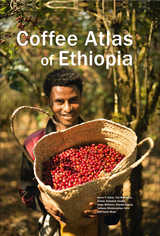
Coffee Atlas of Ethiopia
Aaron Davis
Royal Botanic Gardens, Kew, 2018
In Ethiopia, the birthplace of coffee drinking, coffee is more than a bean or a beverage—it’s an entire world. This atlas of Ethiopian coffee features the central elements of coffee production in Ethiopia, from detailed studies of the coffee plant to a large-scale view of its cultivation across Ethiopia. The book provides maps not only of the forests and farms where the bean grows, but the transportation networks that bring this coveted crop to the world. With single-origin coffees on the rise, this book will be a fascinating read to coffee geeks and industry insiders alike.
[more]

Catalogue of Fungi of Colombia
Rafael F. De Almeida
Royal Botanic Gardens, Kew, 2022
A thorough listing of Colombia’s known fungi.
Catalogue of Fungi of Colombia is the first comprehensive listing of the known Colombian fungi. It was compiled by a team of Colombian and international mycologists from the Royal Botanic Gardens, Kew, the Humboldt Institute, and other partner organizations. The catalog is accompanied by fifteen chapters written by specialists providing perspectives on the state of knowledge of the Colombian fungi covering a range of topics, from the diversity of the main groups of fungi and history of mycological studies in Colombia to aspects of the biogeography, ecology, biotechnology, conservation, and uses of Colombian fungi. The catalog is further enriched by supplementary material that allows readers to explore open questions, develop new ideas on the use of fungi and their conservation, and foster social and environmental awareness.
Catalogue of Fungi of Colombia is the first comprehensive listing of the known Colombian fungi. It was compiled by a team of Colombian and international mycologists from the Royal Botanic Gardens, Kew, the Humboldt Institute, and other partner organizations. The catalog is accompanied by fifteen chapters written by specialists providing perspectives on the state of knowledge of the Colombian fungi covering a range of topics, from the diversity of the main groups of fungi and history of mycological studies in Colombia to aspects of the biogeography, ecology, biotechnology, conservation, and uses of Colombian fungi. The catalog is further enriched by supplementary material that allows readers to explore open questions, develop new ideas on the use of fungi and their conservation, and foster social and environmental awareness.
[more]
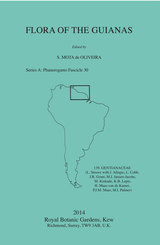
Flora of the Guianas
Series A: Phanerogams Fascicle 30: 139 Gentianaceae
Sylvia Mota de Oliveira
Royal Botanic Gardens, Kew, 2014
The Gentianaceae family is wildly diverse, with members ranging from annual and perennial herbs, to shrubs, to tropical trees and woody lianes. Their wide range means that many species of Gentiana are popular in gardens, especially those cultivated as rock garden or herbaceous border perennials. Flora of the Guianas Gentianaceae takes a critical, illustrated look at this family as it appears in Guyana, Suriname, and French Guiana. The volume includes species descriptions, distribution, habitat, and vernacular names, as well as line drawings throughout.
[more]
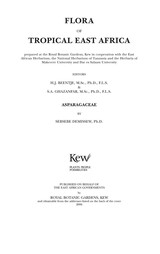
Flora of Tropical East Africa
Asparagaceae
Sebsebe Demissew
Royal Botanic Gardens, Kew, 2006
Being a descriptive account of the flowering plants and ferns native and naturalised in Kenya, Tanzania and Uganda, together with information on exotic ornamental and crop plants.
Prepared at the Royal Botanic Gardens, Kew in co-operation with the East African Herbarium, the National Herbarium of Tanzania, and the Herbaria of Makerere University and Dar es Salaam University.
Prepared at the Royal Botanic Gardens, Kew in co-operation with the East African Herbarium, the National Herbarium of Tanzania, and the Herbaria of Makerere University and Dar es Salaam University.
[more]
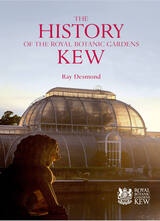
The History of the Royal Botanic Gardens Kew
Ray Desmond
Royal Botanic Gardens, Kew, 2007
This is the definitive history of the world's greatest botanic garden. Comprehensively revised, this stunning, richly illustrated reference takes in every aspect of Kew's history over two centuries - from its origin, pivotal roles in collecting, classifying and identifying the world's plants, the commercial crops it gave to the British Empire, to being a world renowned institution at the cutting edge of plant science.
Kew's heritage - the herbarium, art and architecture, from Kew Palace and Burton's great Palm House to the Princess of Wales Conservatory, state of the art laboratories and new Davies Alpine House - is illustrated and described, together with the events leading to its UNESCO World Heritage Site status in 2003. Lastly, it is a social history of the Gardens, and of the scientists, architects, designers and gardeners who have made Kew.
Detailed appendices and bibliography have been updated, and two new chapters added, bringing the book up to date as the authoritative reference work on Kew, its history and function.
[more]
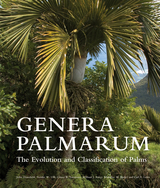
Genera Palmarum
The Evolution and Classification of Palms
John Dransfield
Royal Botanic Gardens, Kew, 2008
Palms are iconic in our culture, representing everything from victory to vacation. And for nearly three decades, Genera Palmarum has been the stand-out reference for anyone interested in this economically and horticulturally important plant family. Now, this award-winning book has been completely updated and revised, bringing it in line with new research and newly discovered genera.
In this new edition, genus treatments now include complete descriptions, nomenclature, and etymology, as well as discussions of diversity, distribution, phylogeny, morphology, uses and ecology. All genera are fully illustrated with full-color photographs alongside analytic illustrations, distribution maps, and even electron micrographs of pollen. An updated introduction provides readers with essential background information via authoratative essays on the structure of palms, their chemistry, their history, and much more.
Fully revised for a new generation of researchers and gardening enthusiasts, Genera Palmarum continues to be the gold-standard reference work on palms.
In this new edition, genus treatments now include complete descriptions, nomenclature, and etymology, as well as discussions of diversity, distribution, phylogeny, morphology, uses and ecology. All genera are fully illustrated with full-color photographs alongside analytic illustrations, distribution maps, and even electron micrographs of pollen. An updated introduction provides readers with essential background information via authoratative essays on the structure of palms, their chemistry, their history, and much more.
Fully revised for a new generation of researchers and gardening enthusiasts, Genera Palmarum continues to be the gold-standard reference work on palms.
[more]
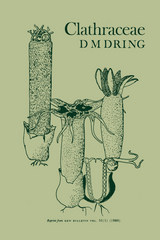
Clathraceae
D M Dring
Royal Botanic Gardens, Kew, 1980
A revision of the world species of Clathrus, Colus, Lysurus etc. Edited for publication by R.W.G. Dennis, who also supplies the keys to genera and species.
Reprinted from Kew Bulletin Vol. 35 (1).
Reprinted from Kew Bulletin Vol. 35 (1).
[more]

Orchids of Madagascar Second Edition
David Du Puy
Royal Botanic Gardens, Kew, 2007
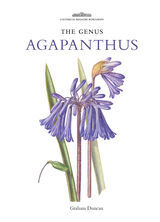
The Genus Agapanthus
Graham Duncan
Royal Botanic Gardens, Kew, 2021
An in-depth guide to a plant group prized for its vivid blue hue.
Renowned for its stunning blue flowers, agapanthus—sometimes known as the blue lily or lily of the Nile—is a group of rhizomatous plants native to southern Africa. First cultivated in the Netherlands in the late seventeenth century, it rose to prominence as a conservatory plant in England during the eighteenth and nineteenth centuries after certain varieties were found to be hardy enough to withstand the colder climate of the British Isles. Graham Duncan’s The Genus Agapanthus provides both a revised classification of this plant group and a superbly illustrated celebration of their unique beauty. Featuring new watercolors from South African artist Elbe Joubert and color photographs showing the species in their spectacular and varied natural habitats, the book also highlights a selection of more than 150 of the most notable agapanthus cultivars from growers across Europe, Africa, and Oceania. The agapanthus’s natural history is spotlighted as well, with comprehensive descriptions of each species, maps of their global distribution, and information on how to successfully cultivate, propagate, and care for them. This book’s blend of science, horticulture, and art makes it essential for all varieties of plant lovers.
Renowned for its stunning blue flowers, agapanthus—sometimes known as the blue lily or lily of the Nile—is a group of rhizomatous plants native to southern Africa. First cultivated in the Netherlands in the late seventeenth century, it rose to prominence as a conservatory plant in England during the eighteenth and nineteenth centuries after certain varieties were found to be hardy enough to withstand the colder climate of the British Isles. Graham Duncan’s The Genus Agapanthus provides both a revised classification of this plant group and a superbly illustrated celebration of their unique beauty. Featuring new watercolors from South African artist Elbe Joubert and color photographs showing the species in their spectacular and varied natural habitats, the book also highlights a selection of more than 150 of the most notable agapanthus cultivars from growers across Europe, Africa, and Oceania. The agapanthus’s natural history is spotlighted as well, with comprehensive descriptions of each species, maps of their global distribution, and information on how to successfully cultivate, propagate, and care for them. This book’s blend of science, horticulture, and art makes it essential for all varieties of plant lovers.
[more]
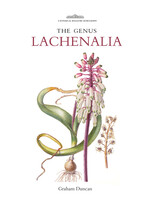
The Genus Lachenalia
Graham Duncan
Royal Botanic Gardens, Kew, 2012
This is the first complete and illustrated monograph of the genus Lachenalia, a horticulturally important and botanically diverse plant group. The relatively small number of Lachenalia species that have been cultivated worldwide are known for their exceptionally showy blooms and fascinating leaves, and for emitting distinctive aromas ranging from spicy to sweet to the distinct scent of coconut, in the case of one species. The horticultural potential of the genus has yet to be fully realized, and many more species await introduction into cultivation. All species in this volume are described, classified, and illustrated, and are accompanied by detailed information on their history, morphology, phylogeny, phytogeography, pollination biology, cultivation, and propagation.
[more]
READERS
Browse our collection.
PUBLISHERS
See BiblioVault's publisher services.
STUDENT SERVICES
Files for college accessibility offices.
UChicago Accessibility Resources
home | accessibility | search | about | contact us
BiblioVault ® 2001 - 2024
The University of Chicago Press









